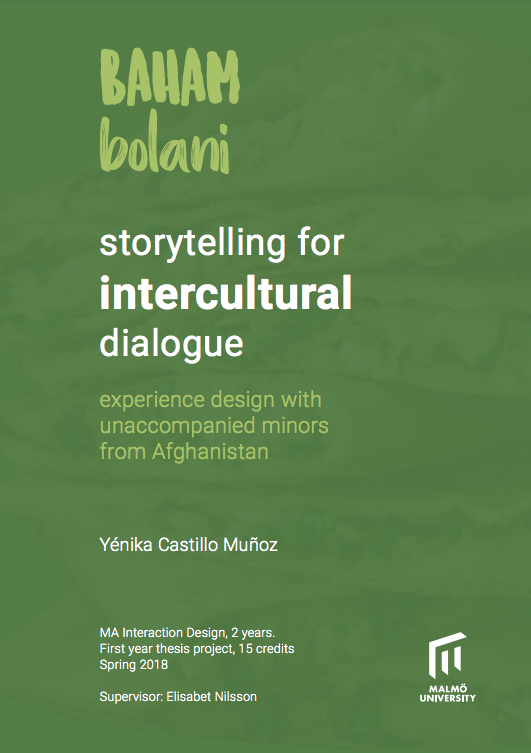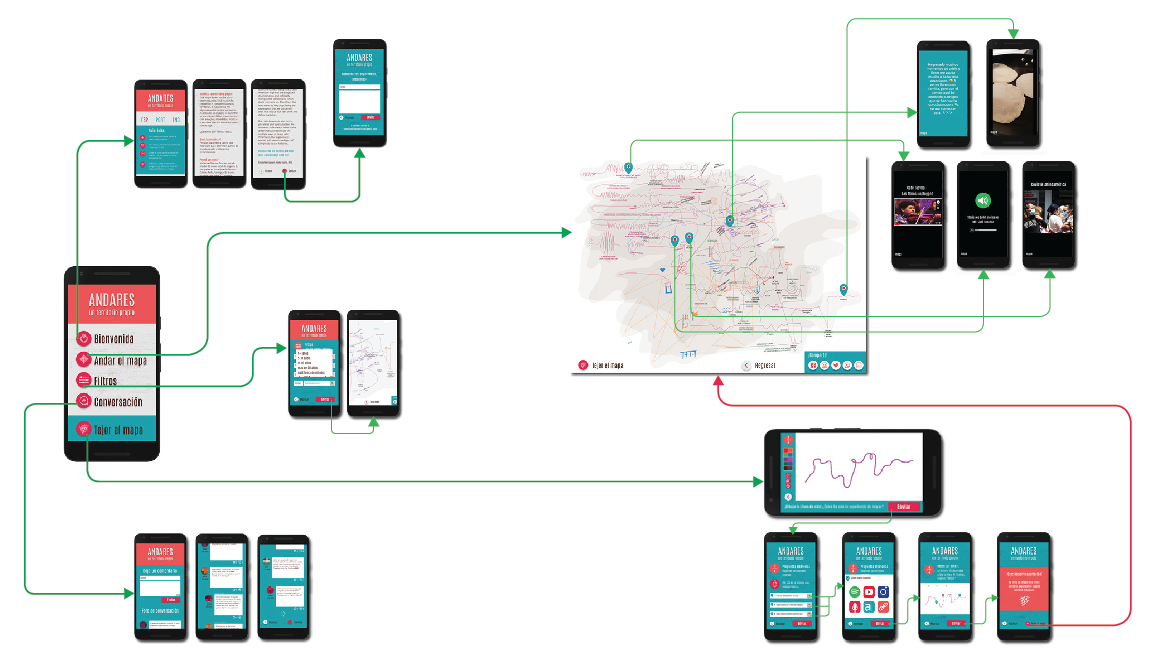
Andares: An interactive map of migrant experiences
who are you in spanish?
what do you laugh about in swedish?
what do you dream about in german?
how do you get upset in chinese?
Andares is a design concept of a digital application that allows visitors to wander and weave an interactive map of diasporic identities: We that have migrated, rest our identities in memories and imaginations of a homeland that will never be as we left it, but also on experiences that we have acquired in our host country, and the learnings from migration itself.
Migrant experiences matter
Migration is a highly complex phenomenon that is shaped by the global changes in politics, economy and environment. The people that migrate do it for a number of reasons. In the countries of residency, they might experience several kinds of hardships to find a place of belonging. Yet, they contribute to build the local culture and community.
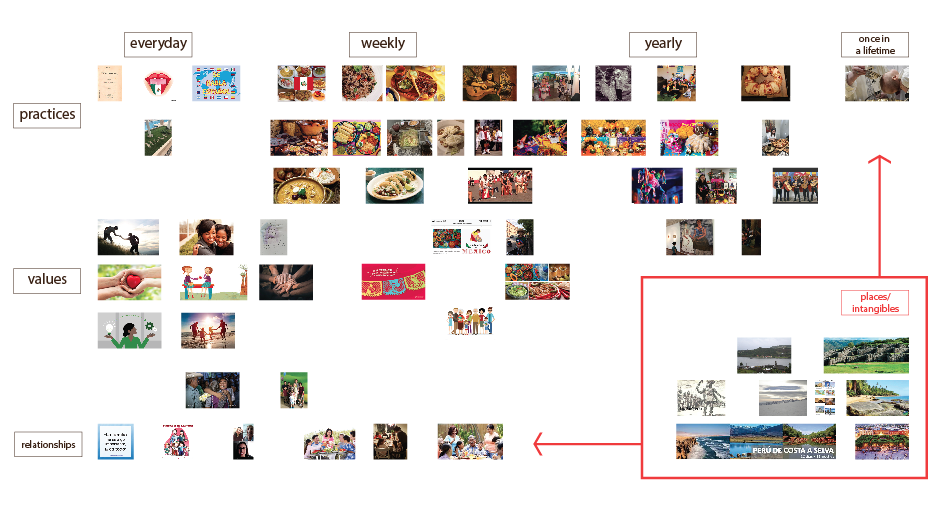




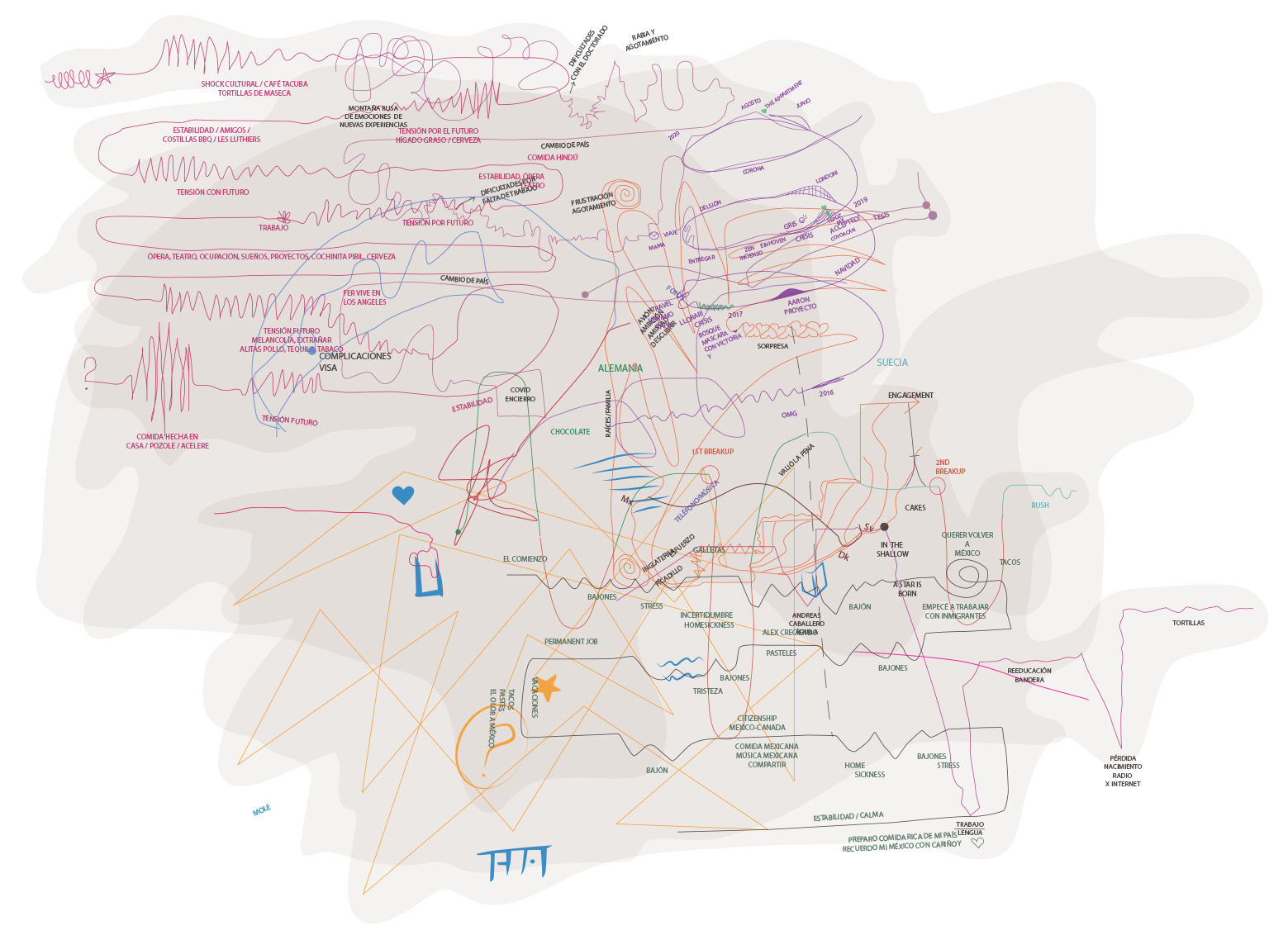

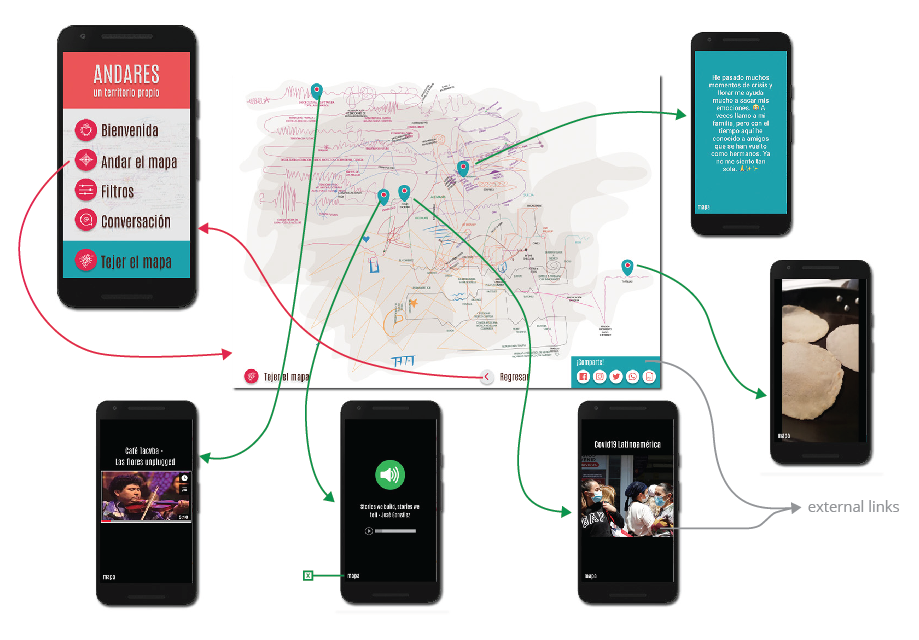
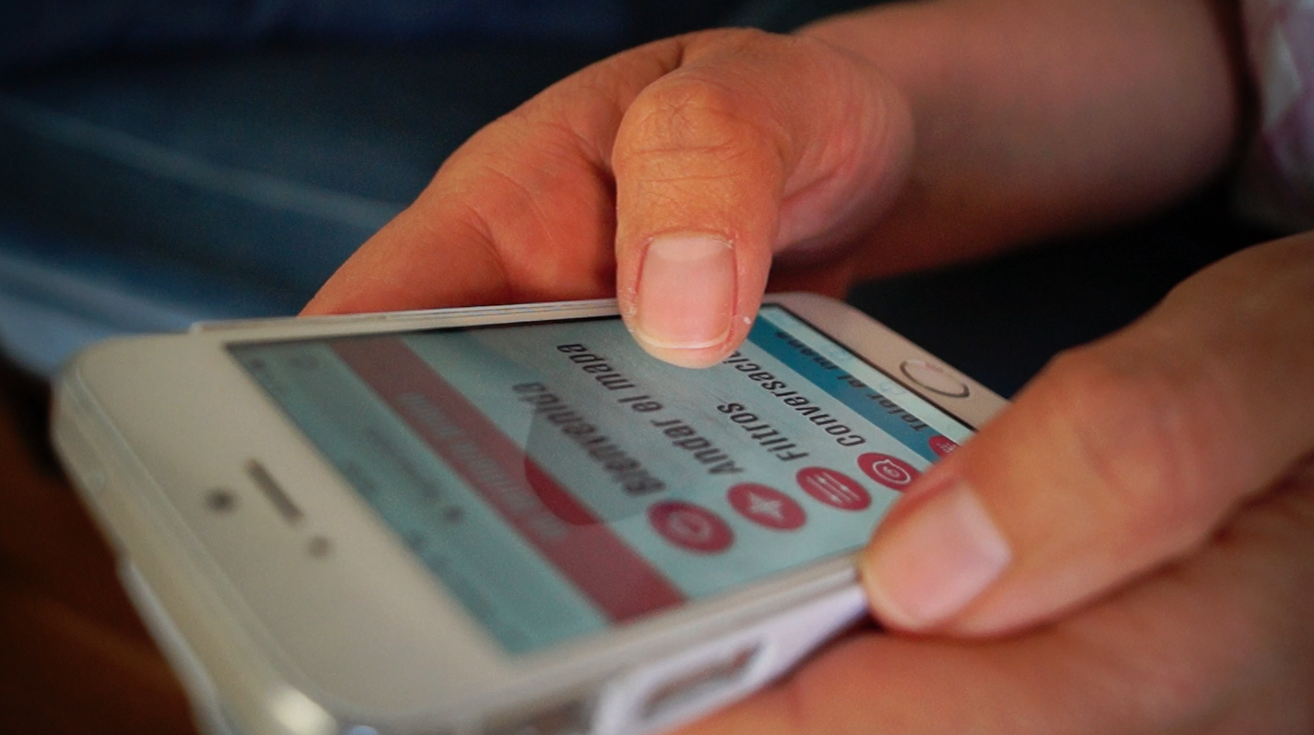
This project started as my second year master project in Interaction Design in Malmö University, called Collective weaving of territories: Exploring diasporic identities with Latin American migrants. A group of Latin American migrants living around the world -mostly women- participated in different stages of the project, exploring the expression of experiences, memories, sensations and learnings through building a rich archive of images, sounds, tastes and places, as well as sketching together. Due to the pandemic of Covid19, all these activities were carried out online, which was already tapping on the diasporic experience.
With methodologies like speculative design and participatory design, and an overall approach of critical and decolonial design, the design process searched at all times, to find the narratives that we migrants wanted to share, instead of adjusting to existing [hegemonic] ones. In this way, we attempt to materialise a territory of our own.
Outcomes
- The result was the digital interface here described, proposed for a smartphone application: As we, nowadays use the phone to orient ourselves, and archive memories and images of our everyday life. It is a critical fabulation of maps: Do they only showing physical locations and places?
- Codesign method: “Weaving identity territories with history lines”: The aesthetic and expressive interactions were thoroughly explored. The participants expressed visually their experiences of migration, and then we played superposing these lines to actual cartographies and to each other, creating a map-like materialisation. The method proved to be very effective for persons that would not consider themselves good at drawing or even creative, to explore other forms of narration. This awakens the reflection of how a collective aesthetic expression emerges when people can contribute with basic elements and skills: Not only they allow themselves to see their stories expressed in a language they re-discover (drawing), but then help each other to “read” and understand their contributions in a deeper level, as individual and collective creations.
Learnings
- Designing for a diasporic situatedness: We live in a time where the physical and virtual reality are becoming increasingly entangled, with blurry limits. This project, carried out entirely online and with persons separated from their countries of origin, questions how we create our sense of belonging and identity simultaneously in these spaces, and what does it mean to explore the alterity as well. What does it mean to resist i these spaces? Understanding the process as a cyclical movement of knowledge, that builds both upon the virtual space and touches and materialises on the physical space: This learning helps us understanding the way migrant communities are actively shaping their local cultures.
- The aesthetic explorations become a base to connect experiences: Through the use of methods based on very basic skills that anyone can participate with, the designers can open spaces for new or renewed aesthetics that can express more accurately the plurality of values and qualities found in codesign processes.
- Examining the roles of the designer, when belonging to the same creative community: Somehow there is a notion that a designer is an external force that remains neutral to certain extent. However, the interaction dynamics radically change when the designer is part of the same community, maybe sharing emotional links with family, friends or cultural affinities, and in a position of equality and vulnerability. Here, it was very useful to consult tools from relational design, and notions from a feminist ethics of care, understanding the importance of infrastructuring to consider the personal relations between participants, the available resources, the co-creation process and the situation, including emotional support to handle the conflict from an insider perspective.
- Decolonising time, archive and identity: Designing for impermanent situations, verbal interactions, virtual settings and in cyclical processes is a very valuable experience from this project: Challenging the notion of concrete, linear, visual. Another important aspect is that our mixed identities are fluid and hard to categorise: We all decolonise a different aspect when going into shared creation processes.
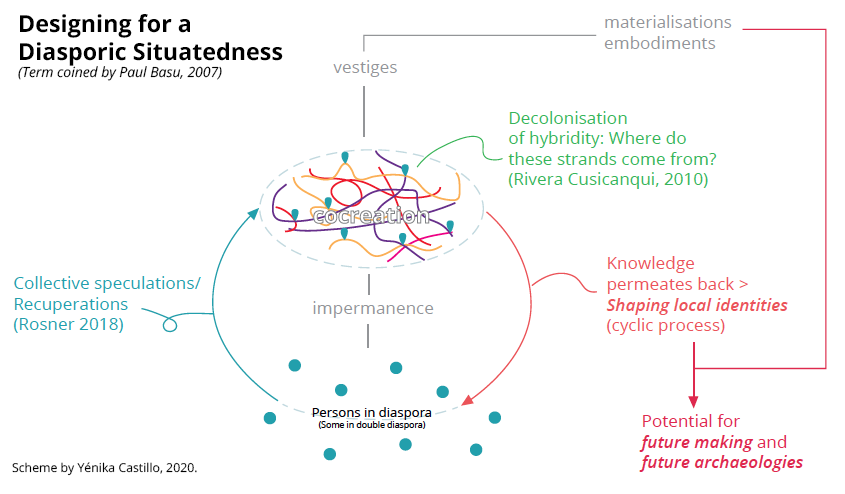
Making futures with migrant stories in the center
- What would happen if political borders didn’t exist as we know them now?
- If migrant stories, instead of being marginalised and secondary in the development of communities, were in the center of them?
- If we assumed ourselves as citizens of the world with multinational cultures that shape local communities in diverse ways?
- If we dedicated time to decolonise hybridity, understanding and giving place to all the traces that build our identities, honouring them and restoring historical traumas?
The idea of Andares is to become a part of a toolkit that can provoke important conversations in communities, both physical and digital ways. Along with the implementation of creative workshops that can be carried out with local actors (organisations, schools, cultural institutions, etc.) to uncover stories of oppression and activate collaborations to embrace migrant communities and their contribution to local cultures. And hopefully, to reach levels of political decision-making in order to start shaping more just futures.
Links:

